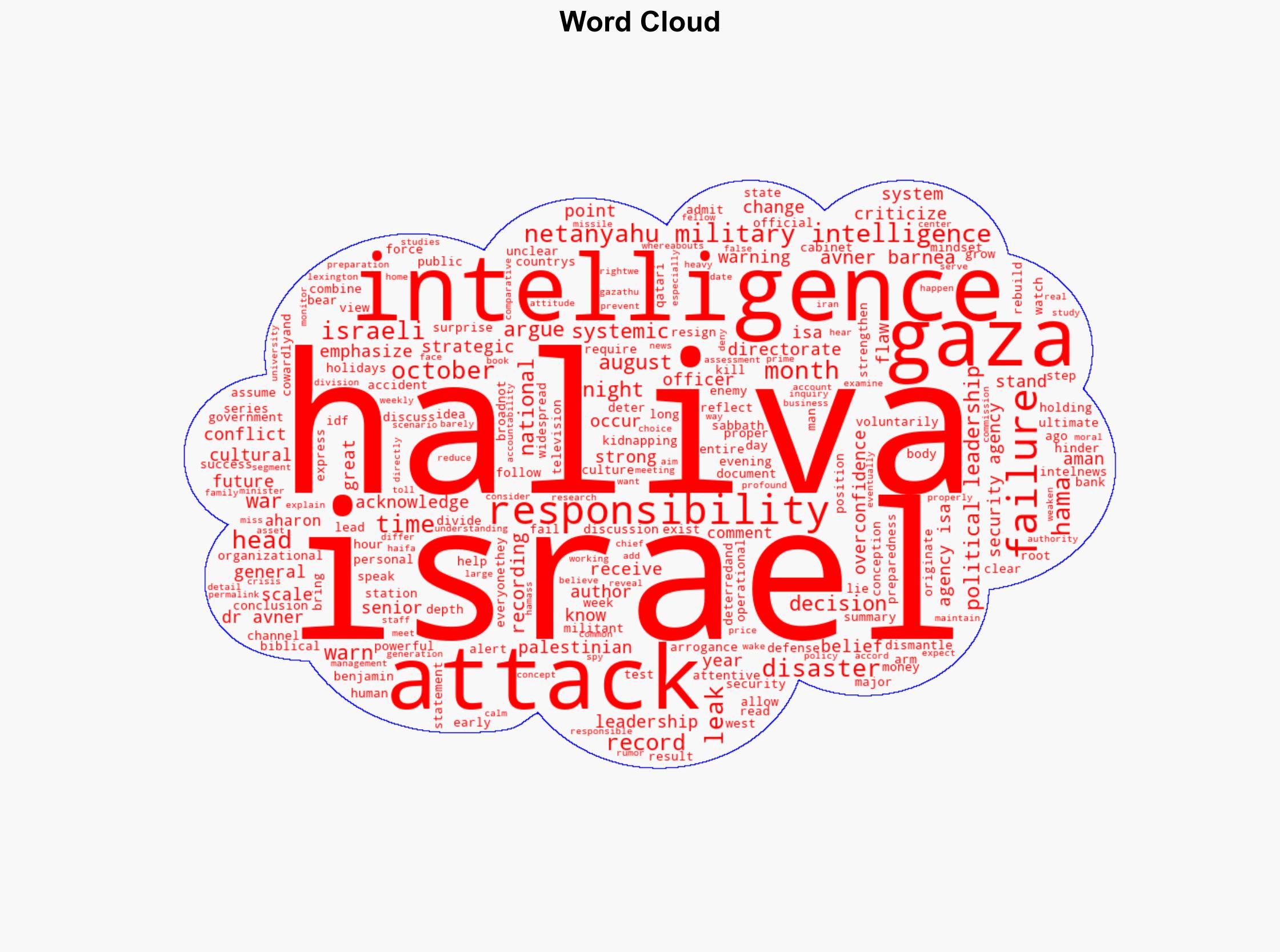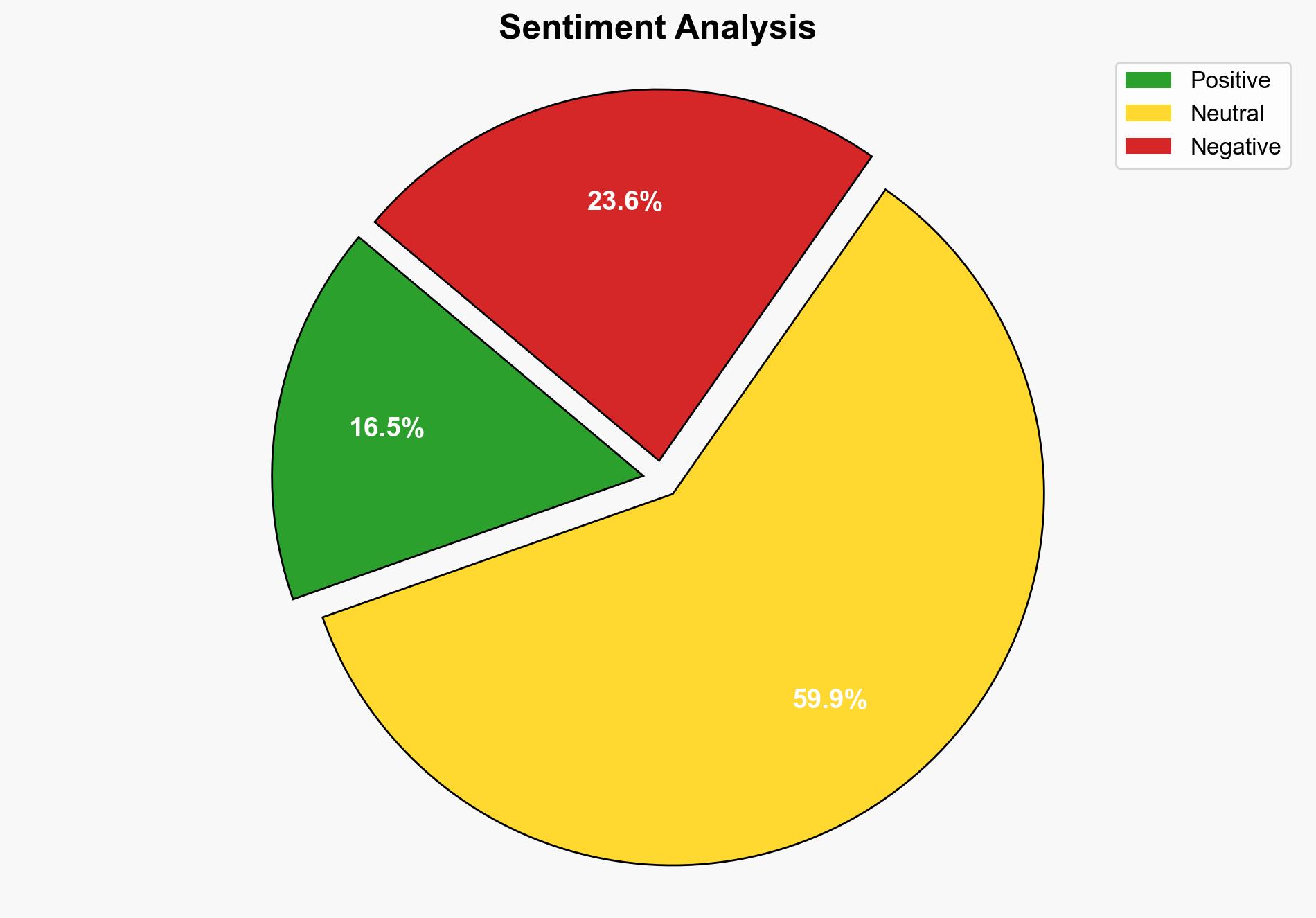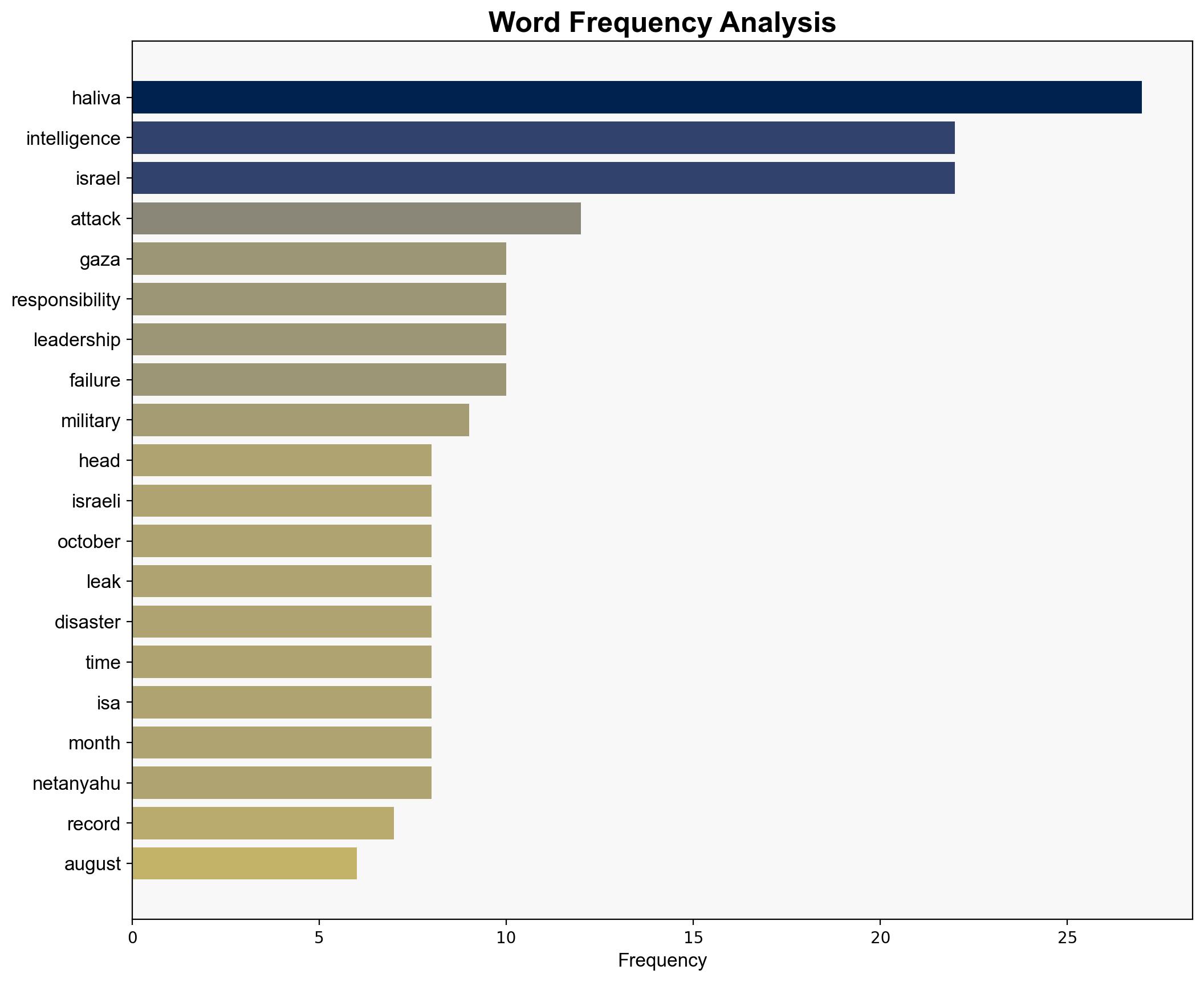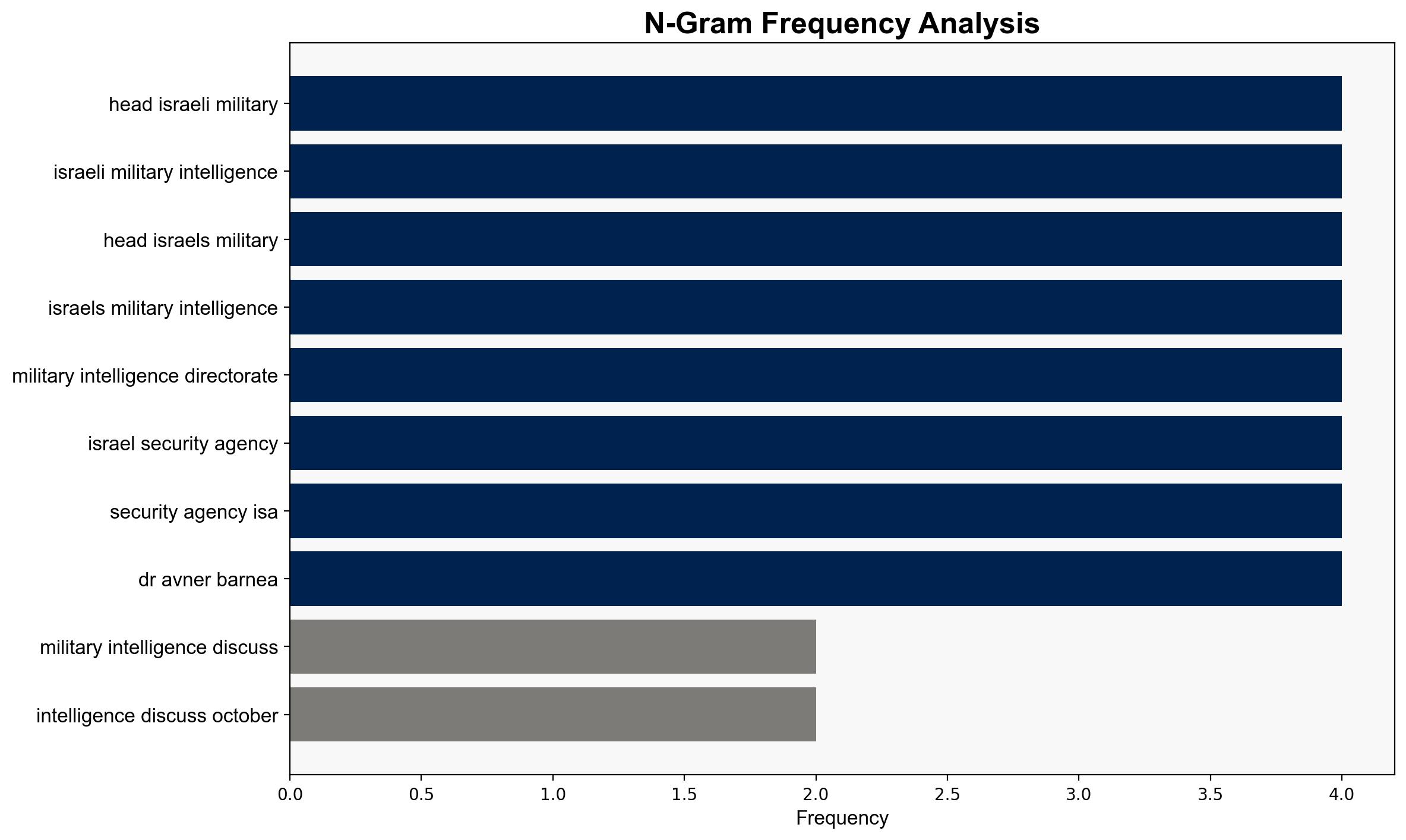Ex-head of Israeli Military Intelligence discusses October 7 attack in leaked recordings – Intelnews.org
Published on: 2025-08-25
Intelligence Report: Ex-head of Israeli Military Intelligence discusses October 7 attack in leaked recordings – Intelnews.org
1. BLUF (Bottom Line Up Front)
The analysis suggests that systemic cultural issues within Israeli intelligence, coupled with political misjudgments, contributed to the October 7 attack. The most supported hypothesis is that a combination of overconfidence and political decisions to strengthen Hamas inadvertently facilitated the attack. Confidence level: Moderate. Recommended action includes a comprehensive review and restructuring of intelligence protocols and political strategies concerning Gaza.
2. Competing Hypotheses
1. **Systemic Intelligence Failure Hypothesis**: The attack resulted from long-standing cultural and organizational flaws within Israeli intelligence, characterized by overconfidence and a failure to adequately assess and respond to emerging threats from Hamas.
2. **Political Misjudgment Hypothesis**: The attack was primarily due to political decisions that underestimated Hamas’s capabilities and intentions, influenced by a strategy to weaken the Palestinian Authority and divide Gaza from the West Bank.
Using ACH 2.0, the first hypothesis is better supported by evidence of systemic arrogance and operational complacency within Israeli intelligence, as highlighted by Aharon Haliva. The second hypothesis is supported by Haliva’s critique of political leadership decisions, but lacks direct evidence linking these decisions to operational failures.
3. Key Assumptions and Red Flags
– **Assumptions**: It is assumed that intelligence protocols were not updated to reflect changes in Hamas’s capabilities. Political strategies were assumed to be based on a misjudged belief in Hamas’s deterrence.
– **Red Flags**: The absence of clear evidence linking political decisions directly to the operational failure. Potential bias in Haliva’s statements, possibly influenced by personal accountability.
– **Blind Spots**: Lack of detailed intelligence on Hamas’s preparations and the internal decision-making process within the Israeli government.
4. Implications and Strategic Risks
– **Patterns**: A recurring pattern of underestimating adversaries due to overconfidence.
– **Cascading Threats**: Potential for increased regional instability if similar intelligence failures occur.
– **Escalation Scenarios**: Risk of further conflict escalation if political and intelligence strategies are not realigned.
– **Dimensions**: Geopolitical tensions may rise, affecting regional alliances and economic conditions.
5. Recommendations and Outlook
- Conduct a thorough review of intelligence protocols and decision-making processes.
- Reassess political strategies regarding Hamas and the Palestinian Authority.
- Scenario-based projections:
- **Best Case**: Successful restructuring leads to improved intelligence capabilities and regional stability.
- **Worst Case**: Continued failures result in further attacks and regional conflict.
- **Most Likely**: Incremental improvements in intelligence and political strategies mitigate immediate risks but require sustained effort for long-term stability.
6. Key Individuals and Entities
– Aharon Haliva
– Benjamin Netanyahu
– Hamas
– Israeli Defense Force (IDF)
– Israeli Security Agency (ISA)
7. Thematic Tags
national security threats, cybersecurity, counter-terrorism, regional focus





